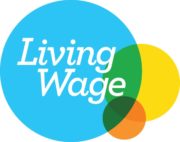Press release: 1 in 4 children live in poverty in the South East- Local MPs must call for change
New research from the End Child Poverty Coalition, provides new information on child poverty across the South East of England. A shocking 25% of all children in the region are living in relative poverty, after the cost of housing is considered, with Slough topping the list for the region. Across the UK this figure stands at 31%.
- 25% of all children in the South East are living in poverty – that’s one in four children.
- 48% of constituencies in the region have a quarter of all children living in poverty
- Slough takes the top spot for child poverty in the region.
- 7 out of the top 10 constituencies with highest child poverty rates are Labour seats
- There is a strong positive correlation between the two-child limit and child poverty across the region adding to compelling evidence that the two-child limit is a major driver of child poverty
- End Poverty Coalition is calling for the government to meet their commitment to significantly reduce child poverty via their upcoming strategy, which must scrap the two-child limit as a starting point
DATE: 2nd June, 2025; New research to understand regional levels of child poverty, carried out by Loughborough University for the End Child Poverty Coalition, provides new information on child poverty across the South East of England. This highlights that a shocking 25% of all children in the region are living in relative poverty, after the cost of housing is considered, with Slough topping the list for the region. Across the UK this figure stands at 31%.
This new data also shows that the vast majority of constituencies (89%) are home to families where 1 in 4 children lives in poverty. This could mean families using food banks to feed their children, children going without warm clothes in winter, or living in cold or unsafe housing.
The End Child Poverty Coalition, representing over 135 organisations across the UK, is calling on the government to meet its manifesto commitment to address these high levels of child poverty in the South East, and across the rest of country. This is a clear issue for Labour MPs as the majority of the constituencies in this region, with the highest rates of child poverty, are held by them. In the constituency with the highest level of poverty, Slough, over a third of children are growing up in poverty (36%). In a classroom of 30 children in this area, approximately 10 children would be living in poverty. Mr Tanmanjeet Singh Dhesi, the Labour MP for Slough, represents this constituency.
The table below shows the 10 constituencies with the highest levels of child poverty in the South East together with the corresponding MP.
| South East | MP | % of children living in poverty |
| Slough | Tanmanjeet Singh Dhesi – Labour | 36% |
| Southampton | Darren Paffey – Labour | 35% |
| Thanet | Polly Billington – Labour | 34% |
| Crawley | Peter Lamb – Labour | 34% |
| Portsmouth | Stephen Morgan – Labour and Amanda Louise Martin – Labour | 34% |
| Hastings | Helena Dollimore – Labour | 34% |
| Havant | Alan Mak – Conservative | 32% |
| Eastbourne | Josh Babarinde – Lib Dem | 32% |
| Isle of Wight | Joe Robertson – Conservative | 32% |
| Folkstone and Hythe | Tony Vaughan – Labour | 31% |
Joseph Howes, Chair of the End Child Poverty Coalition and CEO of Buttle UK “No child in the South East or beyond should have to experience poverty. These figures should demonstrate to the government just how important it is to quickly address this so as to prevent another generation of children from growing up in low-income families. The government’s strategy to tackle child poverty must invest in children, not continue work as normal while more and more children fall below the poverty line. As a first step the government must scrap the two-child limit to benefit payments, a policy which continues to pull children into poverty every day!”
ENDS
Media Contacts
Celia venables
Tel: 07756 525 004
Notes to editors:
- The full report ‘Local indicators of child poverty after housing costs, 2023/24’ as well as tables with Constituency and Local Authority data and further information can be found here.
- The End Child Poverty Coalition is made up of 135 organisations including child welfare groups, social justice groups, faith groups, trade unions and others. Together with a group of Youth Ambassadors, members campaign for a UK free of child poverty. Further information on the Coalition can be found here; https://endchildpoverty.org.uk/about/
- This research uses a Relative After Housing Costs measure of child poverty. ‘After Housing Costs’ shows the income available to a household once rent, water rates, mortgage interest payments, buildings insurance payments, ground rent and service charges are paid. This enables a more accurate comparison of what households have available to spend on food, utilities, clothing and leisure, than looking at income alone, given the disparity of rents in different parts of the UK.





